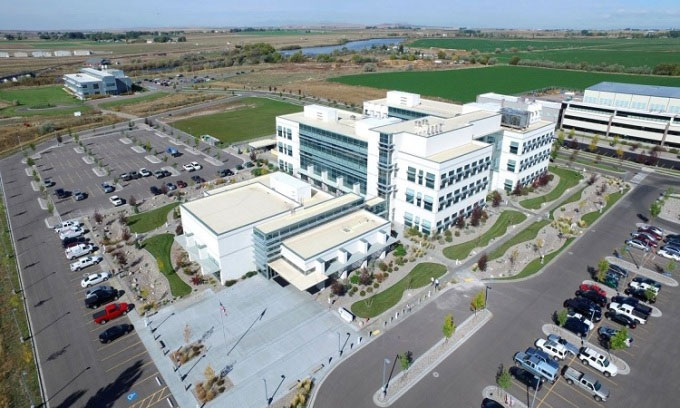NASA develops nuclear reactor on the Moon
NASA is working to design an abundant and sustainable supply of electricity on the Moon by means of fusion.
NASA is working with the US Department of Energy's Idaho National Laboratory to establish an energy source independent of the Sun during missions to the Moon later this decade. "Delivering a reliable high-power system on the Moon is the next important step in space exploration, and that goal is within our reach," said Sebastian Corbisiero, head of the Thermal Power Project surface ganglia, said.

Idaho National Laboratory. (Photo: Idaho Falls Magazine)
If the project is successful in supporting humans to live on the Moon, the next target is Mars. NASA says surface fusion electric power can provide an abundant and sustainable source of electricity regardless of environmental conditions on the Moon or Mars. "I hope the surface power system will greatly benefit the plan to power structures on the Moon and Mars, and even boost demand on Earth," said Jim Reuter, deputy director. NASA's Space Technology Mission Steering Committee, shared.
The reactor will be built on Earth and then sent to the Moon. The plan for a surface fusion power system includes a uranium fuel reactor core, a system to convert nuclear energy into usable electricity, a heat management system to cool the reactor, and a distribution system. provide at least 40 kilowatts of electricity continuously for 10 years in the lunar environment.
Some of the other requirements include the ability to turn off on its own without human intervention, operate from the floor of the lunar lander, disassemble and run on a mobile system to move to another location. In addition, when launching from Earth to the Moon, the system needs to fit inside a cylindrical cavity with a diameter of 4m and a length of 6m. The system should not weigh more than 6,000kg. The initial design will be completed by February 19, 2022.
Idaho National Laboratory has partnered with NASA on many projects in the past. Most recently, the lab developed a radioisotope power generation system for NASA's Perseverance rover. The system converts heat generated by the natural decay of the isotope plutonium-238 into usable electricity. The car-sized Perseverance robot landed on Mars in February this year and is still working.
- NASA successfully tested Mars's nuclear reactor
- NASA: Mars nuclear reactor was successfully tested
- There was once a nuclear reactor flying above our heads
- Conceptual design of large plutonium nuclear reactor
- US printed 3D nuclear reactor core
- 13 years old to build a nuclear reactor
- China designs nuclear reactor without cooling water
- Successfully built Stellarator-type thermonuclear reactor
- Mysterious uranium from Hitler's nuclear reactor
- NASA is developing nuclear energy technology.
- Japan will restart the nuclear reactor safely
- Floating nuclear reactor using molten salt
 Van Allen's belt and evidence that the Apollo 11 mission to the Moon was myth
Van Allen's belt and evidence that the Apollo 11 mission to the Moon was myth The levels of civilization in the universe (Kardashev scale)
The levels of civilization in the universe (Kardashev scale) Today Mars, the sun and the Earth are aligned
Today Mars, the sun and the Earth are aligned The Amazon owner announced a secret plan to build a space base for thousands of people
The Amazon owner announced a secret plan to build a space base for thousands of people This Abundant Mineral on the Moon Could Power Humanity for Thousands of Years
This Abundant Mineral on the Moon Could Power Humanity for Thousands of Years  The Strange Disease That Affects Everyone Who Has Ever Set Foot on the Moon
The Strange Disease That Affects Everyone Who Has Ever Set Foot on the Moon  What would a day on the Moon be like for astronauts?
What would a day on the Moon be like for astronauts?  First photo of Mars' strangely shaped moon
First photo of Mars' strangely shaped moon  The biggest supermoon of the year is about to light up the world's skies
The biggest supermoon of the year is about to light up the world's skies  New research shows that Earth has a new 'Moon'
New research shows that Earth has a new 'Moon' 